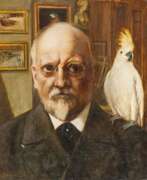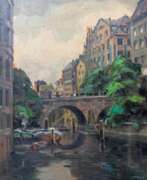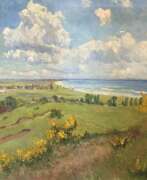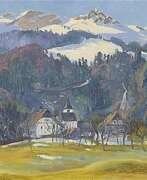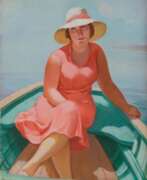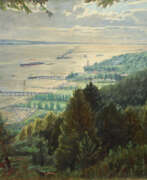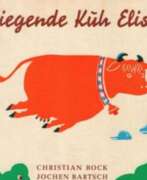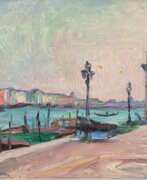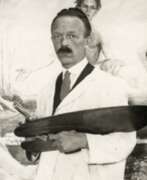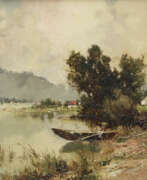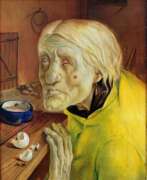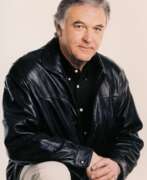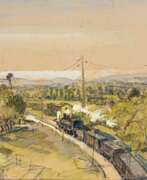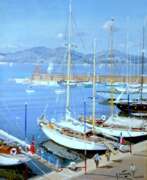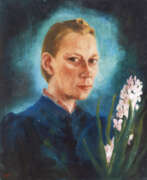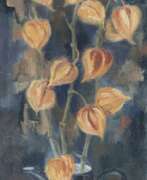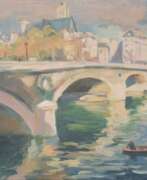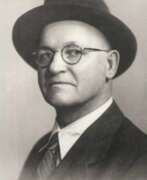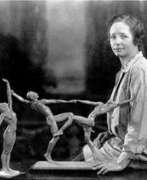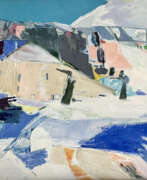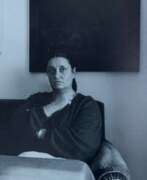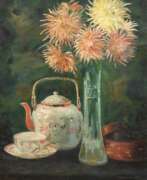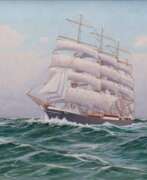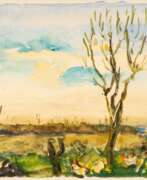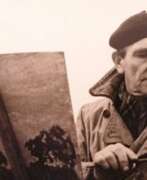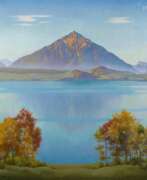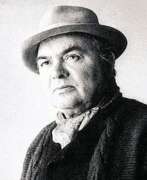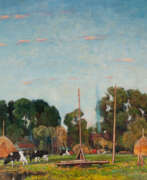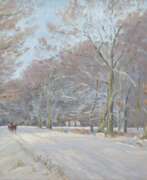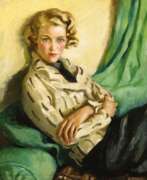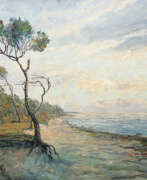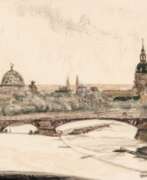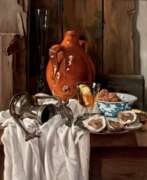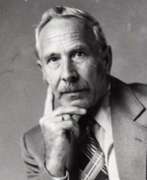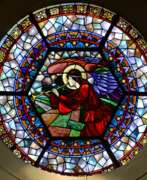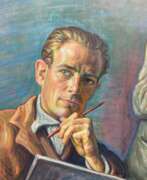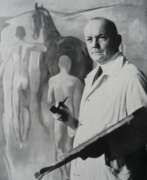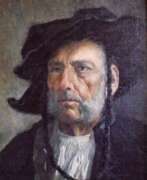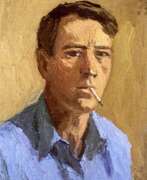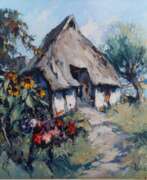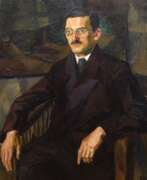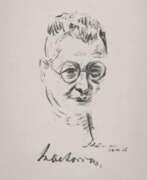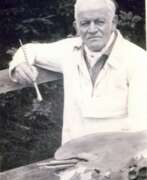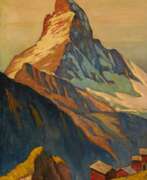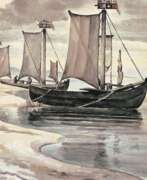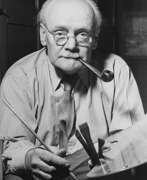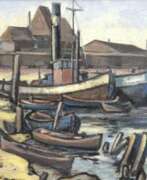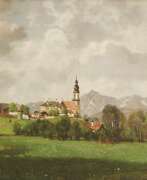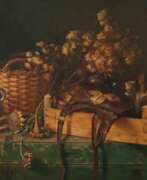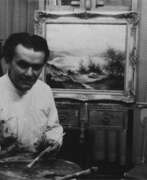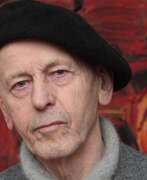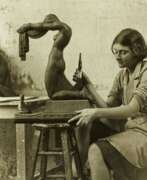Artists 20th Century Realism


Thomas Baumgartner was a German painter, recognized for his evocative portrayals of rural life. Born in Munich in 1892, he was celebrated for his detailed and vibrant depictions of Bavarian customs and countryside, earning him a place among notable 20th-century German painters.
After training at the Munich Academy and various travels in Europe, Baumgartner established himself with a distinctive style that blended traditional Bavarian influences with his unique artistic vision. His works often featured robust, earthy scenes of peasant life, which not only showcased his technical skill but also conveyed a deep affection for his homeland's landscapes and customs.
Throughout his career, Baumgartner's paintings were widely exhibited and appreciated, particularly for their craftsmanship and the way they captured the essence of rural Germany. His art is a testament to the cultural heritage of Bavaria, resonating with those who value the preservation of regional histories and lifestyles.
Baumgartner's legacy is preserved in art collections and has been featured in major exhibitions, often commanding attention in both national and international art circles. His dedication to depicting the simplicity and beauty of peasant life helps keep the rural traditions of Germany alive in the collective memory of the art world.
For those interested in exploring the serene beauty of traditional German art, Thomas Baumgartner's works offer a timeless journey into the heart of Bavaria's countryside and culture.
To stay updated on upcoming sales and auctions featuring the works of Thomas Baumgartner, consider signing up for our newsletter. This subscription will keep you informed about new opportunities to acquire pieces from this remarkable artist's legacy.
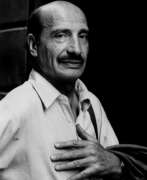

Édouard Boubat was a French photojournalist and art photographer.
In 1943, he was subjected to service du travail obligatoire, forced labour of French people in Nazi Germany, and witnessed some of the horrors of World War II. He took his first photograph after the war in 1946 and was awarded the Kodak Prize the following year. He travelled internationally for the French magazine Réalités, where his colleague was Jean-Philippe Charbonnier, and later worked as a freelance photographer. French poet Jacques Prévert called him a "peace correspondent" as he was humanist, apolitical and photographed uplifting subjects.
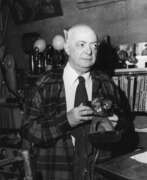

Brassaï, whose real name was Gyula Halász, was a Hungarian-French artist and photographer best known for his work documenting the streets of Paris during the 1920s and 1930s. He was one of the key figures of the Surrealist movement and his work continues to influence photographers and artists to this day.
Brassaï moved to Paris in the 1920s to pursue a career in art. He initially worked as a journalist and began taking photographs to accompany his articles. However, it was his nocturnal photographs of the city that would bring him international fame.
Brassaï's photographs of the streets of Paris at night captured the city's seedier side, including its prostitutes, bars, and cabarets. His work is known for its use of dramatic lighting and strong contrast, which helped to create a moody, evocative atmosphere.
In addition to his photography, Brassaï was also a talented painter and sculptor. He was a close friend of many of the leading artists and writers of the time, including Pablo Picasso, Salvador Dalí, and Henry Miller.
Brassaï's work has been exhibited in major museums and galleries around the world, and his photographs have been published in numerous books and magazines. He was one of the most influential photographers of the 20th century, and his legacy continues to inspire artists and photographers today.


Teo Eble was a Swiss abstractionist painter and graphic designer.
Eble studied at the Academy of Fine Arts in Berlin, then taught at the Basel School of Applied Arts from 1931 to 1967. In 1933 he co-founded the Swiss Group 33, an anti-fascist association of artists.
His work was influenced by the realist, objective painting of the 1920s. The subjects of Eblé's early works were landscape paintings and depictions of cities and their life.
In 1934, Eblé began abstract painting and became a prominent artist of the abstract movement in Switzerland and was also recognized internationally. He held exhibitions in France and the United States, in 1958 at the Venice Biennale and in 1959 at Documenta in Kassel. In the 1960s, Eblé created numerous murals in public buildings.


Arthur (Usher) Fellig, known by his pseudonym Weegee, was a photographer and photojournalist, known for his stark black and white street photography in New York City.
Weegee worked in Manhattan's Lower East Side as a press photographer during the 1930s and 1940s and developed his signature style by following the city's emergency services and documenting their activity. Much of his work depicted unflinchingly realistic scenes of urban life, crime, injury and death. Weegee published photographic books and also worked in cinema, initially making his own short films and later collaborating with film directors such as Jack Donohue and Stanley Kubrick.
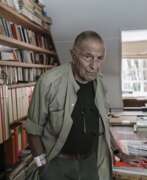

David Goldblatt was a South African photographer noted for his portrayal of South Africa during the period of apartheid. After apartheid had ended he concentrated more on the country's landscapes. What differentiates Goldblatt's body of work from those of other anti-apartheid artists is that he photographed issues that went beyond the violent events of apartheid and reflected the conditions that led up to them.
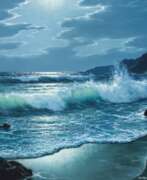

Anton Gutknecht was a German-American landscape painter known for his maritime seascapes of southern California and rural Europe. With a particular interest in the tumultuous nature of the ocean, the artist often focused on capturing waves crashing on the shore or on the boughs of a ship rendered in a high level of realistic detail. Gutknecht spent his early life traveling between different areas of the country, notably Munich and Hamburg, observing the mountainous terrain that would later be the focus of his work and bring him recognition. Gutknecht taught at the Royal Academy in Vienna before frequently traveling to southern California in the 1930s, eventually moving there to settle in Palm Springs and focus on capturing the landscape there.
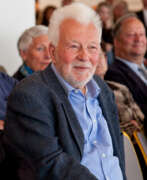

Robert Lebeck was an award-winning German photojournalist.
Lebeck became well known in 1960 after his report on the independence of the Congo "Afrika im Jahre Null" ("Africa in Year Zero") which included a photograph of an African man, Ambroise Boimbo pinching the ceremonial sword of Belgian King Baudouin. To this day that picture remains his "calling card".
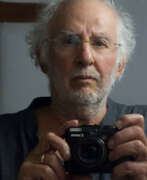

Danny Lyon is an American photographer and filmmaker.
All of Lyon's publications work in the style of photographic New Journalism, meaning that the photographer has become immersed in with, and is a participant of, the documented subject. He is the founding member of the publishing group Bleak Beauty.
After being accepted as the photographer for Student Nonviolent Coordinating Committee (SNCC), Lyon was present at almost all of the major historical events during the Civil Rights Movement.
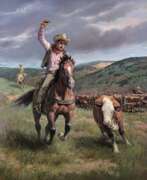

Lajos Markos was a Hungarian-American artist, trained at the Royal Academy of Budapest. He gained recognition as a portrait painter in New York City, depicting notable figures like John Wayne, Robert F. Kennedy, and President Ronald Reagan. Markos later moved to Houston, where he developed an interest in Western American art. His works can be found in various museums and private collections, including the Cowboy Hall of Fame and JP Morgan's headquarters. He also painted significant historical and cowboy-themed pieces.
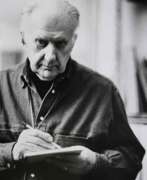

Gabriele Mucchi was an Italian painter, graphic artist and architect. He is considered a co-founder of New Realism.
Gabriele Mucci studied civil engineering and architecture at the University of Bologna. His name became known outside Italy for his impressive frescoes, and his studio became a meeting place for the anti-fascist group Corrente.


Lowell Blair Nesbitt was an American painter, draughtsman, printmaker, and sculptor. He served as the official artist for the NASA Apollo 9, and Apollo 13 space missions; in 1976 the United States Navy commissioned him to paint a mural in the administration building on Treasure Island spanning 26 feet x 251 feet, then the largest mural in the United States; and in 1980 the United States Postal Service honored Lowell Nesbitt by issuing four postage stamps depicting his paintings.
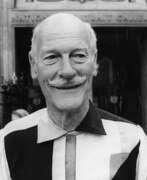

Norman Parkinson was a renowned British photographer who is considered one of the most influential fashion photographers of the 20th century. Parkinson began his career in the 1930s and continued to work until his death.
Throughout his career, Parkinson worked for numerous fashion magazines, including Vogue, Harper's Bazaar, and Queen. He was known for his use of vibrant colors and his ability to capture his subjects in dynamic poses and interesting settings. Parkinson's photographs often had a sense of humor and playfulness, and he was known for his ability to put his models at ease, resulting in natural and spontaneous photographs.
Parkinson's work has been exhibited in galleries and museums around the world, and he has been the subject of numerous books and documentaries. He received numerous awards throughout his career, including the Royal Photographic Society's Centenary Medal in 1985.
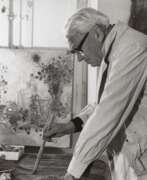

Max Peiffer Watenphul was a German artist. Described as a "lyric poet of painting", he belongs to a "tradition of German painters for whom the Italian landscape represented Arcadia." In addition to Mediterranean scenes, he regularly depicted Salzburg and painted many still lifes of flowers. As well as oil paintings, his extensive body of work encompasses watercolours, drawings, enamel, textiles, graphic art, and photographs.
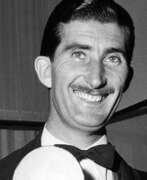

Edward Quinn is an Irish photographer famous for his portraits of celebrities and artists.
Edward Quinn began his career as a photojournalist, covering events such as the Spanish Civil War and the Second World War. In the 1950s he moved to the French Riviera and began photographing the rich and famous — Pablo Picasso, Brigitte Bardot, Grace Kelly, Max Ernst, Alexander Calder, Francis Bacon, Salvador Dali, Graham Sutherland, David Hockney.
Quinn's photographs are noted for their naturalness and spontaneity. He had a talent for capturing his subjects in inconspicuous moments and revealing their true essence. His portraits often show his subjects relaxed and at ease, as if they were unaware of the camera's presence.
In addition to photography, Quinn was also a writer and filmmaker. He wrote several books about the French Riviera and made a documentary about Pablo Picasso.
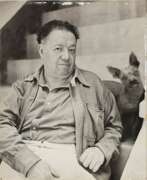

Diego María de la Concepción Juan Nepomuceno Estanislao de la Rivera y Barrientos Acosta y Rodríguez, more commonly known as Diego Rivera, was a prominent Mexican painter celebrated for his critical role in establishing the Mexican mural movement both nationally and internationally. Born on December 8, 1886, in Guanajuato, Mexico, to a well-to-do family, Rivera was a child prodigy in art, encouraged by his parents from a young age after they noticed his penchant for drawing. This early support included installing chalkboards and canvases on the walls of their home to foster his talent.
Rivera's art was not just limited to murals; he was also a key figure in Mexican Cubism and had a rich body of easel paintings. However, his murals, depicting scenes of Mexican society and reflecting his leftist political views, remain his most notable contributions. Some of his most famous works include "Man at the Crossroads," which stirred controversy due to its inclusion of Lenin, leading to its destruction at the Rockefeller Center in New York. Rivera's murals are scattered across Mexico and the United States, serving as historical documents that highlight his technical skill and deep social engagement.
His personal life was as colorful and tumultuous as his art, marked by multiple marriages, including to fellow artist Frida Kahlo. Their relationship was both passionate and stormy, significantly influencing their respective works. Rivera's legacy extends beyond his artwork; he was a mentor to several artists and left an indelible mark on the art world with his contributions to public art and his political activism. His works have been declared national monuments by the Mexican government, underscoring his pivotal role in the country's cultural heritage.
For collectors and experts in art and antiques, Rivera's works offer not only aesthetic beauty but also deep social and historical insights. If you're passionate about adding a piece of this rich cultural heritage to your collection or staying updated on auction events related to Diego Rivera's art, signing up for updates can provide you with timely information on new sales and exhibitions featuring his masterpieces.
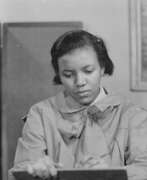

Augusta Savage was an American artist, renowned for her work in the Harlem Renaissance era. Born in Florida in 1892, Savage achieved fame for her sculptures that powerfully articulated the nuances of African American culture. Her journey from the American South to becoming a celebrated New York artist is an inspiring tale of resilience and talent in the face of adversity.
Savage's contributions went beyond her artistic creations; she was a passionate educator and advocate for equal rights in the arts. Her most famous work, "The Harp," inspired by the song "Lift Every Voice and Sing," was exhibited at the 1939 New York World's Fair, embodying the aspirations and struggles of African Americans. This piece, however, was sadly destroyed, as were many of her public works, leaving only a few pieces in museums today.
Despite the scarcity of her surviving works, Augusta Savage remains a pivotal figure in American art history. Her legacy endures through the artists she mentored and the barriers she broke, emphasizing the importance of representation in the arts. Collectors and experts recognize her sculptures not just for their aesthetic value but also for their historical significance.
Stay informed about exhibitions and sales featuring Augusta Savage's work. Sign up for updates and never miss an opportunity to explore her profound contributions to art and culture. This subscription will keep you alerted to new product sales and auction events specifically related to Augusta Savage.
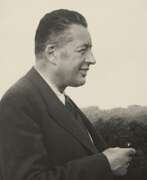

Karl Hugo Schmölz was a German photographer.
In collaboration with the great Rhineland architects of his time, including Adolf Abel, Bruno Pohl, Dominik Böhm, Gottfried Böhm, Hermann von Berg, Wilhelm Riefan, Rudolf Schwarz, Hans Schilling, Joachim Schürmann, he created an impressive series of images of the post-war architecture of Cologne. The compilations included shots of architecture, interiors and the city at night. In addition, Schmölz worked with various companies on advertising, especially in the furniture industry.
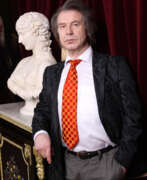

Alexander Maxovich Shilov (Russian: Александр Максович Шилов) is a distinguished Russian portrait painter whose influence spans both the Soviet and contemporary Russian art scenes. Born on October 6, 1943, in Moscow, Shilov's early life was marked by hardship, driving him to work as a loader at just fifteen to support his family. Despite these challenges, his passion for art led him to study at the Surikov Moscow Art Institute between 1968 and 1973, where he honed his skills and developed a distinctive style that would later define his career.
Shilov's artistry is deeply rooted in the tradition of realism, a commitment that he has steadfastly maintained throughout his career. This approach has enabled him to capture the essence of his subjects with remarkable sensitivity and depth. His works often reflect the people and events of his time, from portraits of Soviet cosmonauts and party leaders to tender depictions of ordinary citizens, front-line soldiers, and workers, embodying the spirit and challenges of the era. Notably, his portraits of Soviet leaders and his contributions to ceremonial portraiture have cemented his reputation, while his personal tragedies and responses to social events have added layers of depth to his work.
Shilov's contributions to Russian art have not gone unrecognized. His dedication was honored when an asteroid was named after him in 1992, and in 1996, he generously donated 365 of his portraits to the Russian government. Moreover, his achievements were further acknowledged with the establishment of the Moscow State Art Gallery of People's Artist of the USSR Alexander Shilov in 1997, dedicated solely to exhibiting his works. This gallery, located steps away from the Moscow Kremlin, offers a comprehensive overview of his artistic journey, from early works to those from his mature period.
For art collectors and enthusiasts interested in the rich tapestry of Russian portrait painting, Alexander Shilov's work represents a profound legacy of realism and emotional depth. His paintings not only capture the likeness of his subjects but also the spirit of an era, making them invaluable pieces of cultural and historical significance.
To stay updated on new additions to Shilov's collection and upcoming auction events featuring his work, signing up for updates is highly recommended. This subscription ensures you're informed about the sales and exhibitions of one of Russia's most celebrated portrait painters, Alexander Maxovich Shilov.


Dayanita Singh is an Indian photographer whose primary format is the book. She has published fourteen books.
Singh's art reflects and expands on the ways in which people relate to photographic images. Her later works, drawn from her extensive photographic oeuvre, are a series of mobile museums allowing her images to be endlessly edited, sequenced, archived and displayed. Stemming from her interest in the archive, the museums present her photographs as interconnected bodies of work that are full of both poetic and narrative possibilities.
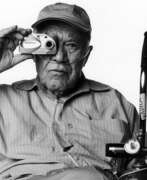

Philip "Snapdragon" Stern was an American photographer noted for his iconic portraits of Hollywood stars, as well as his war photography while serving as a U.S. Army Ranger with "Darby's Rangers" during the North African and Italian campaigns in World War II.
